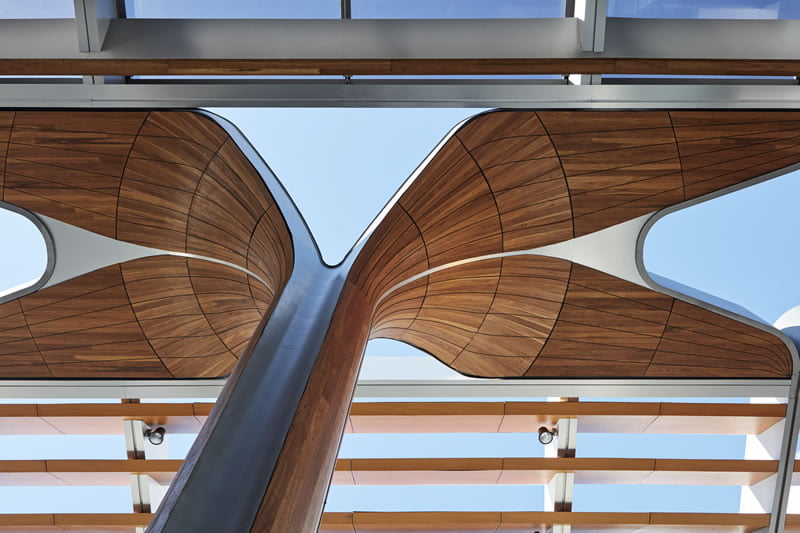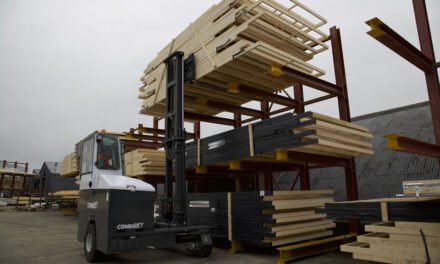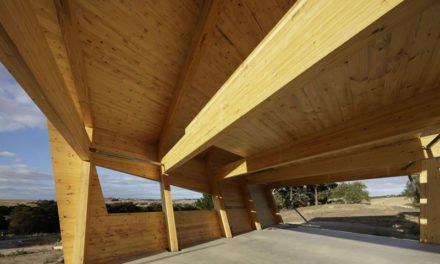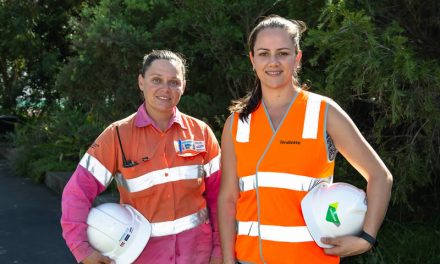Timber cladding can solve time, cost and durability issues for builders and owners.
Michael Kennedy is driving back from meeting with a builder when I reach him on the phone. “My team are going to look at me with horror when I get back,” he says, laughing, before adding that this happens semi-regularly.
The builder’s described a job and asked, ‘can you do it?’ Kennedy’s told him it should be doable, but has just confessed he doesn’t yet know how. As he says, “It can’t be that hard, we’ll just work out a way. It’s a great job for the team – it’s fun. You look at a problem and think ‘How can you do it in wood for the environmental benefits?’ and ‘How can we do things a little differently to give a great outcome to our customers, whether that’s speed to market for them or cheaper, easier to install or just better overall?’
“That’s what we try to do and it works, because those customers keep coming back and wanting to buy wood from us, which is what we want.”
It’s more than a nice phrase for the media. The company has long been working closely with builders and architects to change the way timber – especially cladding – can be translated from drawing to reality, including some extremely ambitious designs.
Cost-saving cladding
“We worked on the Queensland Emergency Operations Centre (QEOC) around 2009–10,” Kennedy says. “The state government wanted buildings that had a reduced carbon input. Even back then, they wanted buildings that could make a positive difference to combatting climate change. Using wood was one of the suggestions from the architects, Architectus, because they understood the merits of wood, what it can do and how positive it is.”
By ‘positive’, Kennedy means research that shows a high use of visible timbers in a building is strongly related to increased feelings of wellbeing and higher productivity among workers – essential for the high-stress environment of the QEOC.
Kennedy’s Timbers collaborated closely with the architect and builder, providing samples of different timber species and profiles and suggestions on usage. Once the design was finalised, the Kennedy’s team also worked closely with the build team from Hutchinson Builders. “We asked them ‘How are you going to build it? What method?’,” Kennedy says.
“They were going to use a traditional method of scaffolding and chippies on site to fix it and I said ‘Well, why don’t we pre-build it?’ They liked the idea and asked how. From there we went back and forth considering how we could build and connect the modules and, with input from all three teams, we came up with a solution that looked right, could be constructed and could be installed.”
The resulting recycled hardwood external cladding panels were prefabricated at Kennedy’s Timbers, with workers protected from weather and working at height risks.
“From there, each module was taken straight to site as needed,” says Kennedy.
“They were lifted straight off the truck with a crane and riggers and went directly onto the face of the building. The installation time was significantly reduced. I think we saved Hutchinsons something like $300,000 in scaffolding and building costs. That was a big positive and it came about through working with the architect and the builders. Since then, we’ve done a lot of projects similar to that, working really closely with the architect and builder to help minimise the cost and get a good outcome.”
Kennedy’s also supplied interior cladding timbers for the QEOC that were installed using traditional methods. They’re part of the overall design intent behind the building.
As Kennedy says, “We know about the environmental properties of wood, what’s only starting to be understood is how, in a building, it fights stress. It makes for a calmer work environment and it has, to use a Greek word, a biophilia effect of making people more relaxed. We know being surrounded by natural materials can help lower the number of sick days people take and the amount of stress they have.”
So the savings from the timber have kept going long after the build.
Solving challenges
Since the QEOC, Kennedy’s has used similar cost-saving prefabricated modules on builds ranging from domestic homes to the Lindis Luxury Lodge, in New Zealand’s Ahuriri Valley – voted best hotel at the 2019 World Architecture Festival. One of the most complex uses has been at the Grand Central Toowoomba Shopping Centre, where the design featured butterfly-style feature ceilings radiating out from 13.5m-high columns and with the timber bent in two different directions.
“The builder who was doing that rang us because they couldn’t get anyone to do it,” Kennedy says. “They said ‘the architect’s designed this and no one can build it!’ Because it had to go at different angles and it had to be prefabricated and they wanted it in solid timber. I went and met with them and said ‘Yeah, we can probably do that’ and then I came back to my team and said: ‘This is what the architect wants, can we do it?’ and they looked at it and went ‘Oh shi… let’s take a look.’ So we built some templates and prototypes and worked out a method.”
Highly accurate CAD drawings were used to guide the fabrication of each section. Each component piece started with 12mm-thick solid tallowwood timber, relief-grooved so it could bend. The tallowwood pieces were then laminated together in sections and these sections were laminated onto a bending plywood at the back. The whole unit was then pre-finished in the factory with an Intergrain oil before being taken to site for installation.
“It was precision milled, which made for a really easy installation,” Kennedy says. “Just guys on scissor lifts putting them up in panels. It was spot-on in terms of the detail, because the architect’s drawings were really precise and our team in the factory also was really precise in what they machined.”
The pre-oiling has become almost standard of late. “It saves time and money on a building site,” says Kennedy. “It also makes for a quicker construction job: if it’s already done, you don’t have the painter coming in afterwards to do it. These new-aged oils that companies like Intergrain have are wonderful products. We can pre-oil in our factory and then they can put a top-up coat on site or they can tint them, whatever they want. It’s really beneficial for the customer.”
Protected from the start
“We work pretty closely with Kennedy’s,” says Brad Pascoe, Intergrain’s national business development manager, industrial. “I’d say we supply them with the lion’s share of the oil they use in their pre-oiling. They use our Universal Oil in its industrial incarnation and by all accounts Michael’s loving it, he’s very happy with the result, his customers are pleased and therefore we’re pleased.”
Intergrain’s Universal Timber Oil hit the market last year and has delivered top results in terms of performance and durability. It deeply penetrates and will allow timber to gradually weather to a natural grey, while protecting the dimensional stability of the timber from within.
“Because it’s an open system, you can pre-oil with this and then you can go over the top with anything you like.” Pascoe says. “It’s putting the choice back into the hands of a consumer and not locking them into one system for the product’s lifespan.”
Too often, Pascoe has seen designers shy away from timber cladding due to misguided beliefs about maintenance or durability.
“Timber is a fantastic product in itself before we even touch it,” he says, “so we’re all about protecting it, highlighting it and helping it to achieve the longest-possible service life.”
As part of spreading the word about the protective products and technologies that are available, Cabot’s, Intergrain’s parent company, has recently hired a national specification manager to talk directly with architects, filling in the last gap. “We strive very hard to get accurate information out to consumers,” Pascoe says, “whether via our website and social media channels talking to DIYers or via our major distributors and business development managers talking to designers, suppliers and builders.
“We want people at all levels of the market, from concept stage right through to handover, to understand what’s available.”
Pascoe and his team have helped drive the rise in industrial pre-oiling, both with products like Universal Oil and also Ceetec’s oiling machinery range that’s distributed by Intergrain in Australia.
“It’s really starting to gain momentum among key players in the timber industry,” Pascoe says. “From producers to merchants and everyone in between, including wholesalers. Timber’s not hard to sell at the moment, given the shortages, but this is another good way to value add, so it makes sense – both from a business point of view, but also ensuring that the end user or the homeowner gets the best result. Timber is such a wonderful product, why wouldn’t you invest a little bit more to make sure it’s protected from the get-go?”
It all adds up to an opportunity for timber cladding to resume its position as a material of choice, particularly at the top end of the market. Kennedy says, “Site costs are a big issue, as are construction times. What we’ve been able to do is say ‘we can help you to eliminate some of those costs and some of that time by being a little smarter about how we do things and looking at ways we can prefab.’ Timber being a material that you can prefab in a factory makes things a hell of a lot easier for our customers.”
Designers and suppliers have responded to the increase in use with innovative profiles and finishes, including random-width or round cladding profiles and different angles on the cladding to create a different type of finish. “The beauty of wood is you can do all that easily and economically,” Kennedy says.
Messages about the fire safety of many species and EWP (up to BAL 29 for natural timber cladding options) have also penetrated. “There is a fire station being built out of timber in Queensland at the moment”, says Kennedy. “One by one we’re quashing all the myths about timber in building. We have timber that we’re doing for people who say ‘I don’t want any maintenance.’ How does that happen? You put a different finish on it, you use the right timber and you make sure it’s done to strength and you detail it correctly. You can have 40 years of life doing nothing to it.”
For more, visit www.intergrain.com.au and www.kennedystimbers.com.au and for more on biophilia, see www.woodsolutions.com.au/wood-at-work
Image: One of the ‘butterfly’ feature ceilings at Grand Central Toowoomba Shopping Centre. Photo by Christopher Frederick Jones/CFJ Photography, courtesy of Kennedy’s Timbers.












